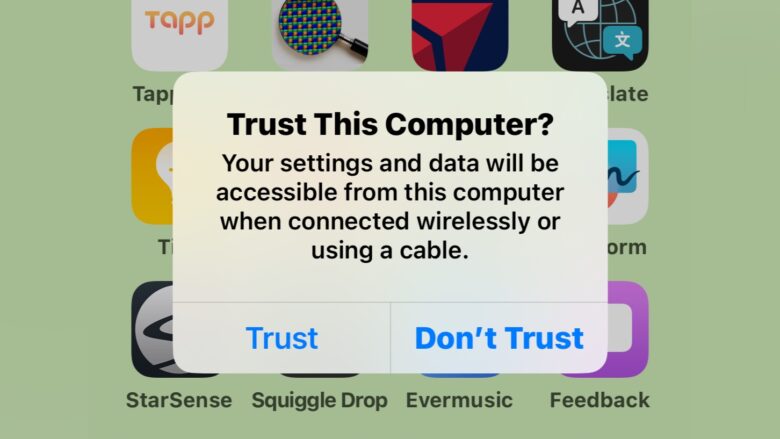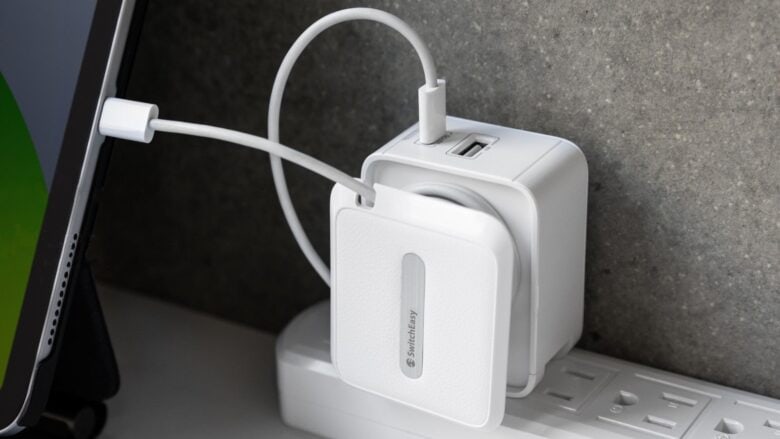
As the old saying goes, there ain’t no such thing as a free lunch — there’s usually a trick. And the same goes for phone charging sustains in airports. These can be used to hack your device, according to a recent warning from the FBI about “juice jacking.”
Here are six ways to safely charge up your iPhone when you’re on the go.
This post contains affiliate links. Cult of Mac may earn a commission when you use our links to buy items.
Beware of ‘juice jacking’
You may have never heard of juice jacking but it’s a risk travelers need to beware of. When you plug your iPhone or iPad into your Mac, more than power flows between the two. They also make a data connection. This is one option for installing new iOS versions, for example.
And when you use a USB port at a public charging station, that same data connection can happen. It’s not supposed to, but as the FBI warns, “Bad actors have figured out ways to use public USB ports to introduce malware and monitoring software onto devices.”
What they’re talking about is juice jacking. Here’s how to protect yourself.
1. Don’t trust strange computers

Screenshot: Ed Hardy/Cult of Mac
If you connect your iPhone to an unfamiliar computer via USB, a pop-up window appears asking, “Trust This Computer?” Then there’s the warning, “Your settings and data will be accessible from this computer when connected wirelessly or using a cable.”
If you see this at a public charging station, disconnect your iPhone immediately. These USB ports are only supposed to send power. There’s no legitimate reason for them to also send data. If one is trying, it’s an attempt to hack your iPhone.
Admittedly, there’s another option. If you select “Don’t Trust,” the connection is only supposed to send power. But by choosing this option, you are taking a risk that the hackers haven’t found a way to get through the software block.
2. Get a USB data blocker
Juice jacking isn’t new. It’s been around for long enough that companies offer products to prevent it. These are simple enough to make, as USB uses separate wires for power and data. Leave out the data wires, and only power can flow.
Plugging your iPhone into a USB port is like unprotected sex. Using a USB data blocker is like using a condom. It’s much safer.
USB data blockers are widely available on Amazon at low prices. You can pick up a pair of them for about $12.
Just be aware that if you still get that “Trust This Computer?” pop-up message with the add-on attached to your charging cable, the data blocker isn’t working.
3. Look for a wireless charger
If you’re lucky, you’ll find a wireless charger. All you have to do is put your iPhone on one of these for it to receive power. Because they don’t employ USB or the Lightning port, there’s no risk of juice jacking.
But you aren’t likely to find one out in the open in an airport terminal. A coffee shop might have them, or look in the passenger lounge that airlines reserve for frequent flyers.
4. Bring your own charger

Photo: SwitchEasy
Many of those public charging stations in airports also include standard three-prong electrical wall sockets. These are safe to use — there’s absolutely no way for them to hack your iPhone. But you’ll need to bring your own charger to plug in. It’s an extra step, but you’re not going to be juice jacked.
This can be the one you normally use at home or office, but frequent travelers should have one that stays in their luggage so it can’t be forgotten.
There are tons of chargers available, like this one from SwitchEasy. Some options are really unique. Get a good one that can pump out plenty of watts and it’ll replenish your iPhone much more quickly than a public charging station will. And it can power up an iPad and MacBook, too
5. Get an external battery
Or go even farther and travel with a power bank. Then you can pass the public charging station with a disdainful sneer.
A good-size external battery can juice up an iPhone, iPad and MacBook without the slightest risk of juice jacking. mophie makes some excellent ones.
Also consider that you can safely plug a battery into the USB ports of a public charging station refill it. There’s no way to install malware onto a power bank.
This type of accessory also offers you advantages beyond the airport. If you’re headed into the wilderness, it can keep your devices powered up.
6. Books are completely immune to juice jacking

Photo: Koshevaya_k
If the point of your holiday is to escape the stress of your everyday life, don’t let your iPhone act as remote access to all that stress. Put the phone down. Turn it off, even. Get out a book or magazine and think about something besides Instagram or work emails.
You won’t be draining the battery on your iPhone, so won’t need to go anywhere near a public charging station. Relax. A book has unlimited battery life and is 100% guaranteed safe from juice jacking.






